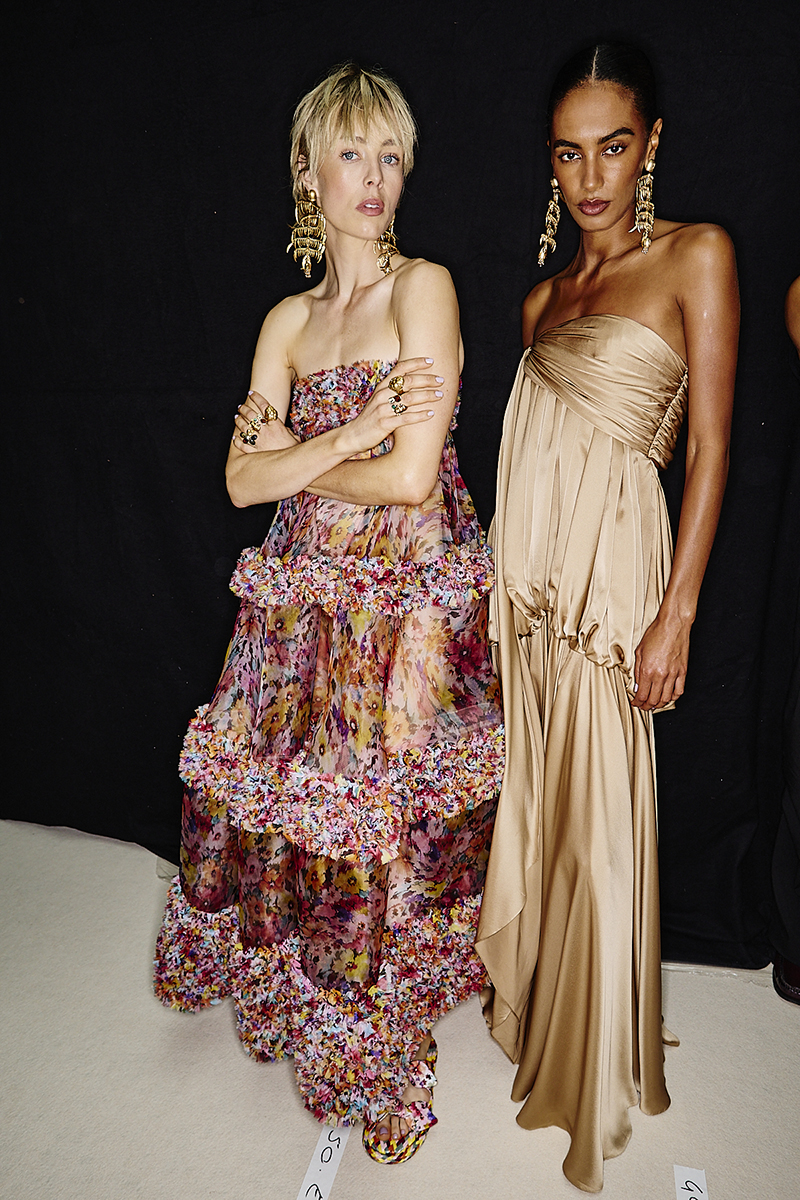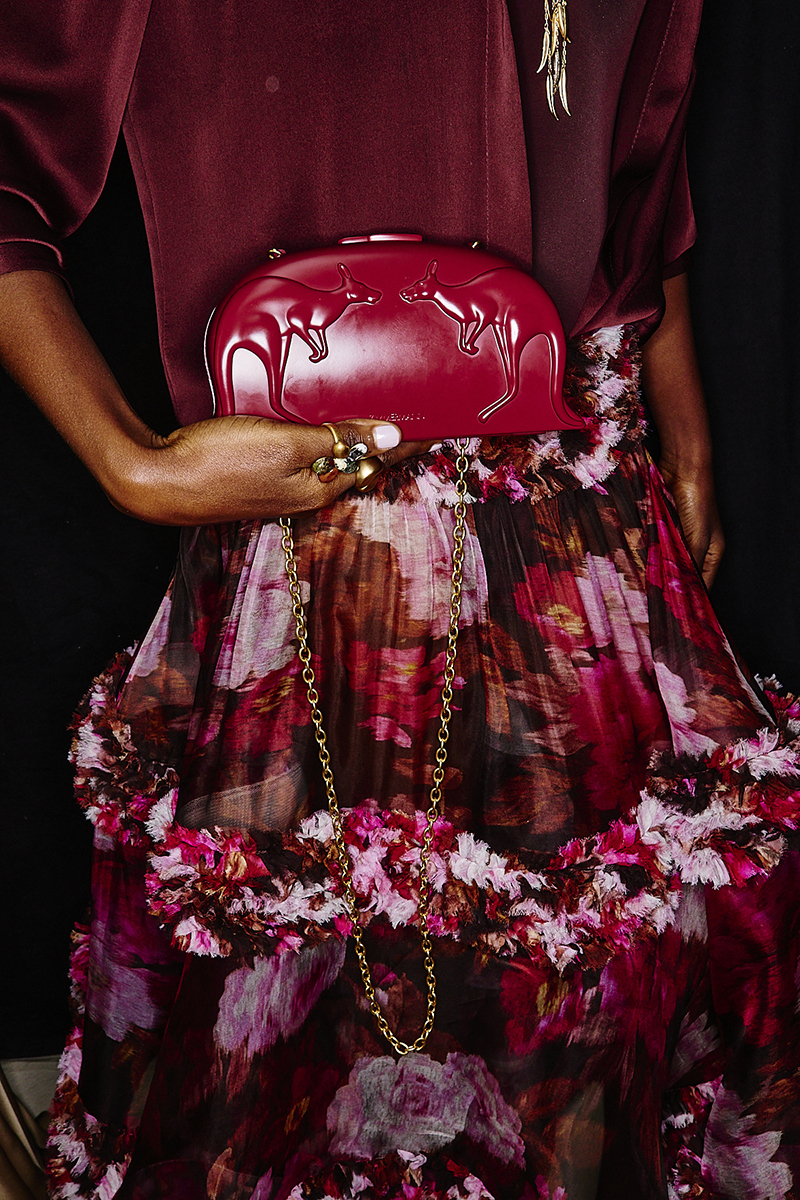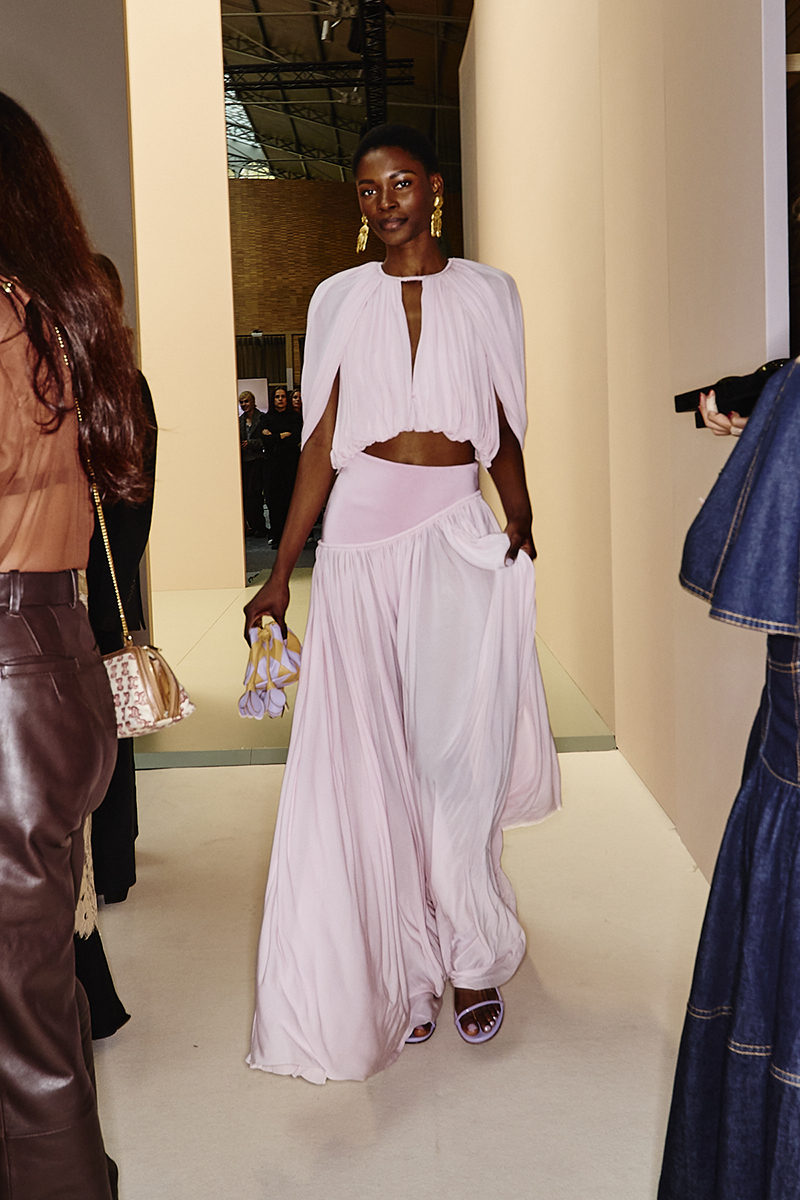Fesyen
Zimmermann Spring 2026 Koleksi
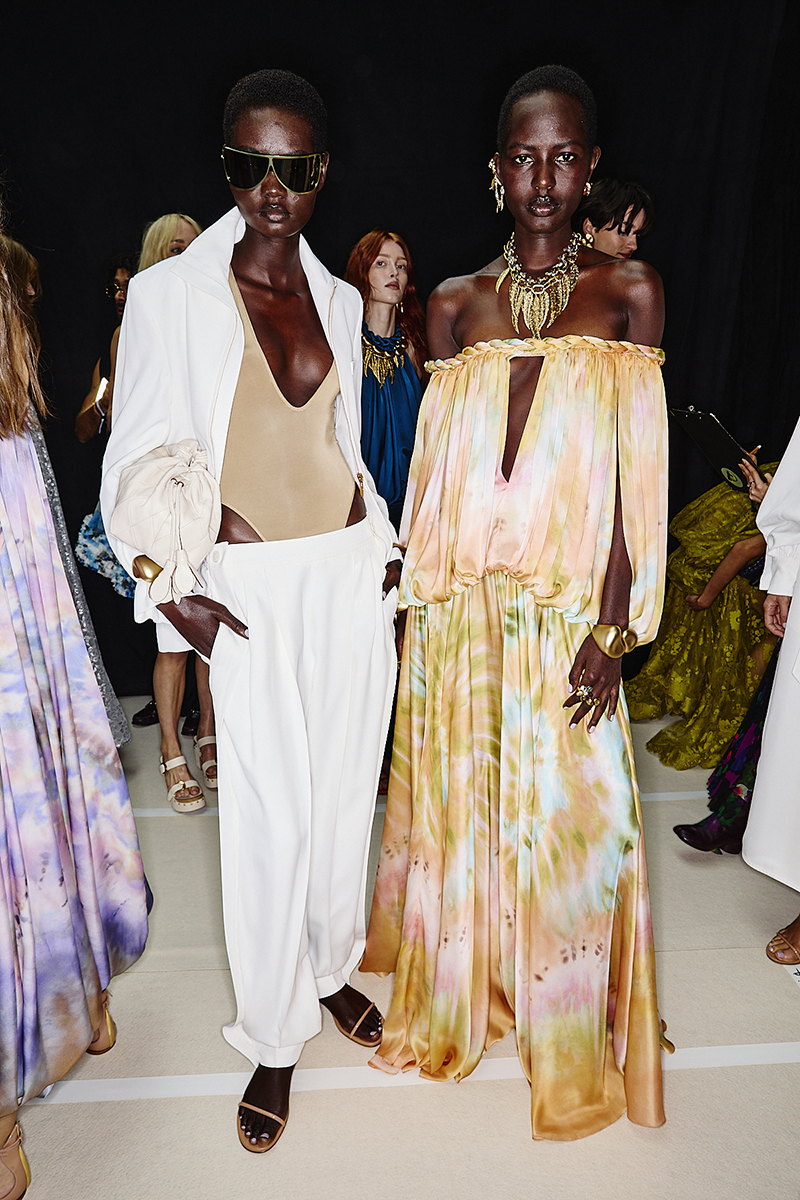
Semangat kerabat: Zimmermann's Ode to Creative Freedom
Perkataan oleh Teneshia Carr
Gambar oleh Sonny Vandevelde
Atmosfera di Le Carroau du Temple adalah gabungan nostalgia dan kesegaran. Di tempat Paris yang elegan, Spring Zimmermann 2026 koleksi, semangat yang bernama Kindred Spirit, menyerupai siaran cahaya matahari dari masa yang berlainan. Ia berfungsi sebagai penghormatan kepada komuniti kreatif pada tahun 1970 -an dan dirayakan pengalaman gembira untuk mewujudkan kecantikan bersama rakan. "Koleksi musim bunga musim ini, Semangat kerabat, adalah ode kepada semangat artistik kolaboratif tahun 70 -an dan keluarga kreatif yang dipilih di seluruh dunia,"Kata Nicky Zimmermann, pengarah kreatif jenama. "Saya diilhamkan oleh kolektif artis ikonik yang membuat tanda mereka pada tahun 70 -an di Lavender Bay, pinggir bandar di Sydney Harbour. Mereka menolak status quo ... dan mempunyai banyak keseronokan di sepanjang jalan. "
Koleksi itu memancarkan rasa bersenang -senang dan pemberontakan, Sama seperti pergerakan buih laut. Ia menampilkan siluet cascading yang benar kepada gaya dan gerakan gaya Zimmermann, memerintahkan ruang dan bukan hanya mendudukinya. Skirt keluar dari pinggang seperti angin ribut angin, lengan baju ditenggelamkan ke dalam capes, puncak peplum terapung di atas pinggul, dan seluar yang terbakar bergerak selaras dengan langkah -langkah model. Setiap bahagian kelihatan menari, mewakili perwujudan pembebasan yang menggembirakan. Palet itu adalah kegembiraan murni, merah jambu psychedelic, Lilacs offbeat, dan ochres bersahaja yang berselisih dengan tenaga. Warna bukan sekadar hiasan; Ia adalah naratif. "Warna adalah tema utama,"Jenama itu menyatakan. "Bunga tandatangan dilengkapkan dan bermain-main dengan grafik yang mengasyikkan, Mencapai perincian minda dan ilusi pergerakan. "
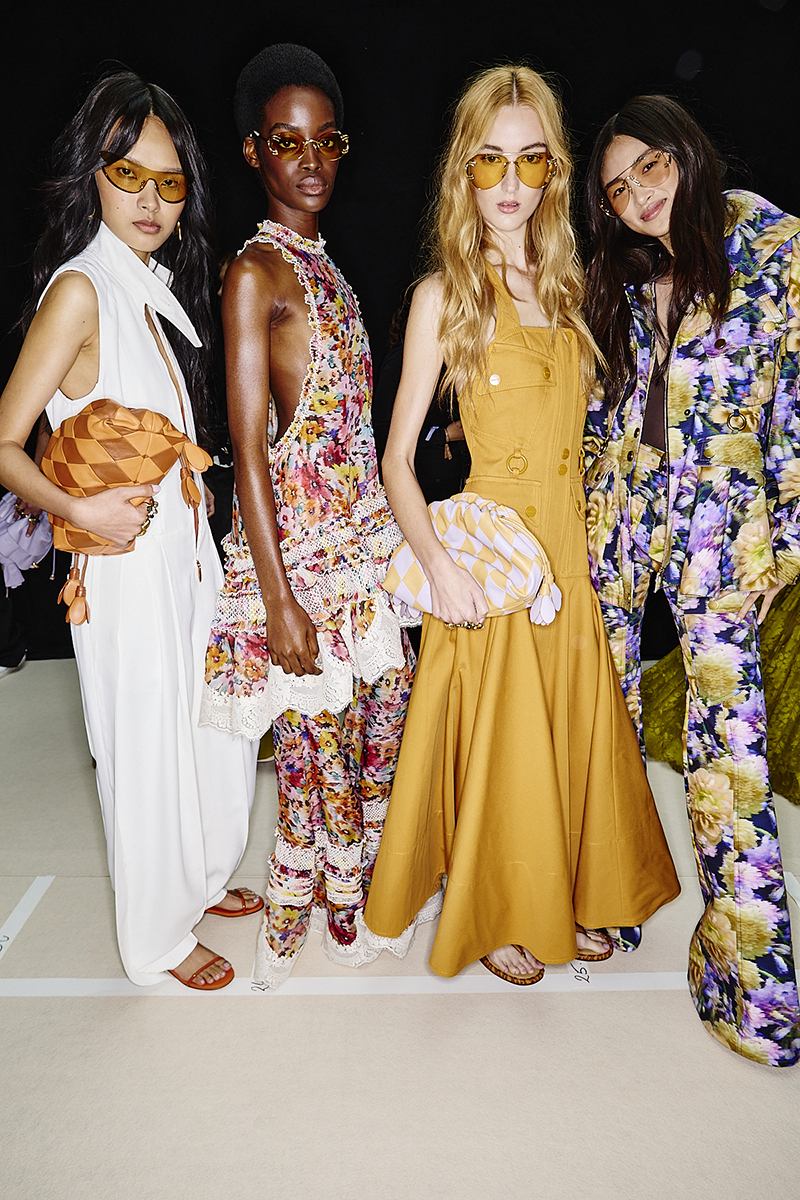
Cetakan -lalur, Warped, Dan hipnosis -membangkitkan masa ketika artis melihat dunia bukan seperti itu, Tetapi seperti yang mungkin. Bunga dicampur dengan lancar antara satu sama lain dalam warna dasi yang mengasyikkan, sementara berani, Saman gerudi kapas berwarna pepejal memberikan keseimbangan struktur kepada keinginan. Seluar yang beralih dan jaket yang disesuaikan berkembang di luar asal-usul utilitarian mereka, memancarkan keyakinan yang sukar yang terasa menyegarkan moden.
Ketukangan Zimmermann berkhidmat sebagai asas untuk persembahan yang menakjubkan di koleksi. Dengan pengaruh dari kedua -dua jenama Sydney Atelier dan Paris Design Studio, Koleksi itu menggabungkan dua gaya yang berbeza: Romantik Pantai Australia dan barisan seni bina yang tepat dari penjahit Eropah. Hasilnya adalah campuran yang harmoni, Gaun yang melayang seperti semburan laut dan sut dengan garis bersih yang memotong udara.
Salah satu inovasi yang menonjol musim ini adalah apa yang Zimmermann merujuk kepada sebagai "Super-fluff." Teknik ini mempunyai banyak lapisan organza, potong berat sebelah dan menggagalkan bersama, disokong dengan crinoline untuk menghasilkan kesan dramatik tier ultra-fluffy pada gaun yang meriah. Keterangan dibaca seperti nota dari artis, Dan pakaian yang benar -benar merangkumi penglihatan puisi ini, berbuih, dinamik, dan hidup bersemangat.
Di tempat lain, Pakaian pelukis telah diimakan semula dalam kulit tan dan twill kapas yang segar, berlapis di atas bodysuits menjunam, mengangguk ke studio artis dan keghairahan penciptaan. Suiting bulu tiba di nada retro 70 -an: Amber, langit biru, dan karang, Dipasangkan dengan jaket dan seluar pendek mikro, hemlines dan blazer yang sepadan dengan bermain -main. Itu tidak sopan tetapi disesuaikan dengan tajam, Wink untuk ekspresi diri yang tidak berani selama sedekad.
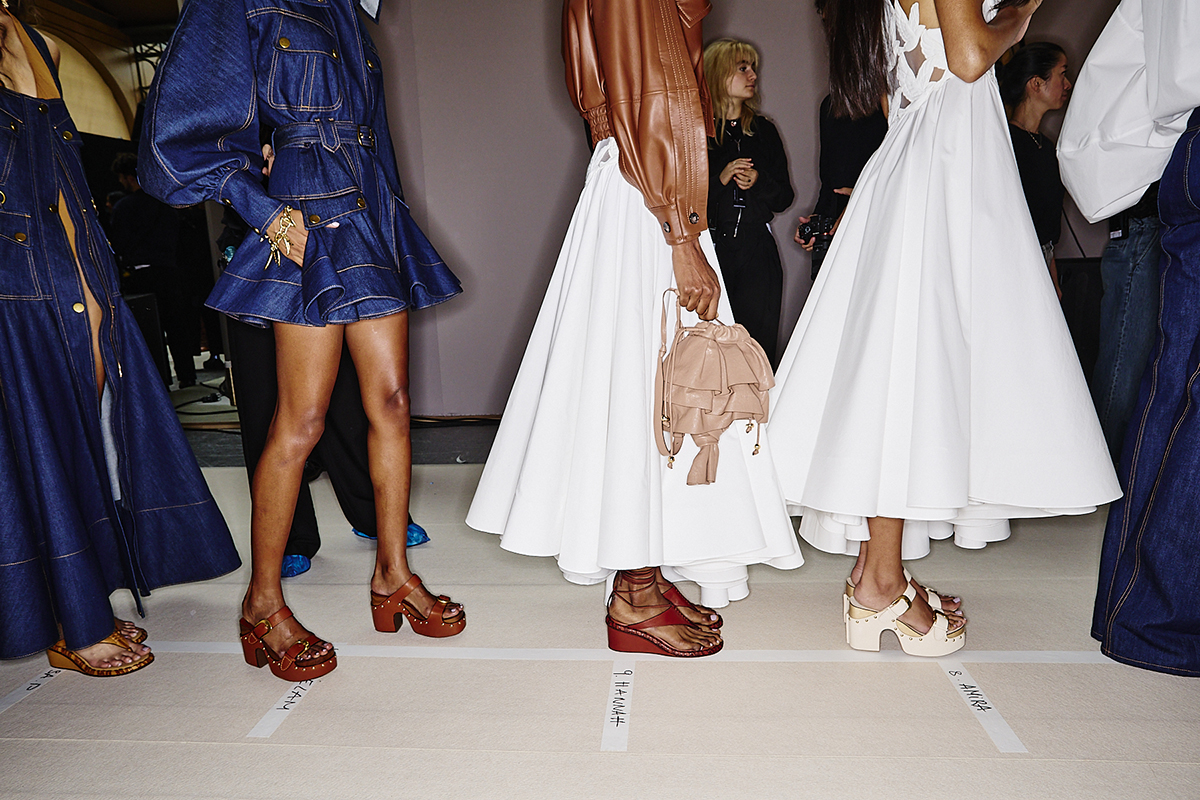
Aksesori memaparkan berani, "Lebih banyak lagi" getaran. Kasut platform kayu dan sandal kulit tan dipasangkan dengan slaid bunga yang diikat dan beg tali pinggang yang berwarna -warni. Beg tangan bertingkat eksentrik menampilkan knot yang dibesar -besarkan, Semasa cermin mata hitam perisai yang besar menambah sentuhan futuristik. Perhiasan Memancarkan Pesona Australia dengan Reka Bentuk Diilhamkan oleh Golden Native Flora, Koalas halus, dan motif cahaya matahari yang kedua -duanya suka bermain dan canggih. Soundtrack pertunjukan, Dibuat oleh Mimi Xu, termasuk bacaan puisi Lana del Rey "Apa yang berlaku ketika saya meninggalkan anda" dari *violet bengkok ke belakang rumput *. Suaranya mengalir seperti siren di atas jejak Model, mencipta mimpi, suasana sinematik yang mengubah persembahan menjadi gabungan ingatan dan halusinasi.
Spring Zimmermann 2026 Koleksi merangkumi percanggahan: lembut namun patung, Nostalgia namun berpandangan ke hadapan, dan bohemian namun dibina dengan teliti. Koleksi ini menunjukkan penghargaan yang jelas untuk kebebasan artistik tahun 1970 -an, Tetapi ia dibentangkan melalui lensa moden yang mengakui kedua -dua kraf dan kekacauan kerjasama. "Koleksi itu menawarkan kebebasan dan kegembiraan,"Kata Zimmermann, "Melalui siluet yang menggembirakan, interaksi warna yang berani, dan psychedelic floral and soft tie-dye cetakan. " Kegembiraan jelas di mana sahaja, termasuk di wajah model di belakang pentas, dalam lantunan organza, Giliran tumit kayu, Dan pusaran warna yang seolah -olah menentang graviti. Walau bagaimanapun, di bawah permukaan kecantikan, mesej halus mengenai persaudaraan dan kreativiti: peringatan bahawa seni, seperti fesyen, terbaik dibuat dengan kerjasama.
Ketika penampilan terakhir terapung di landasan, Dikurung dalam pergerakan dan cahaya, Semangat Lavender Bay, Cove sunlit di mana artis pernah berkumpul untuk melukis, bermain, dan memprovokasi, hidup sekali lagi. Di tangan Zimmermann, Ingatan itu berubah menjadi sesuatu yang baru: dunia di mana persahabatan adalah medium, Kebebasan adalah kain, dan gaya adalah tindakan pemberontakan bersama. Semangat kerabat bukan sekadar koleksi; Ia perasaan. Seseorang dijahit dari ketawa, Kerjasama, Dan jenis keindahan yang wujud hanya ketika jiwa -jiwa bertabrakan.
